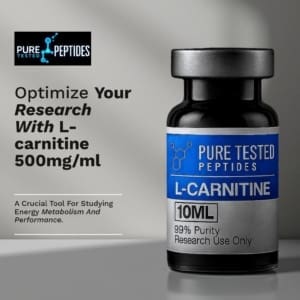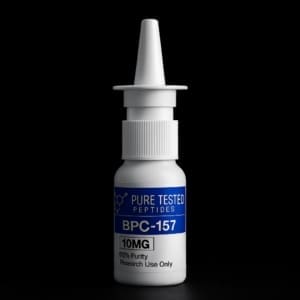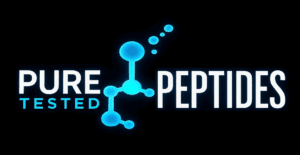Peptide Purity Testing (Without the Headache) & Where to Buy Peptides Online
Let’s decode what all those purity graphs and acronyms mean. Below you’ll find the most common identity, purity, and safety checks run on research peptides—plus the kind of results labs usually want to see before hitting “add to cart.”
Everything here is for laboratory research only—not a medical claim or recommendation.
Fast links to the hot items mentioned here
Note: exact SKUs can vary by inventory; these search links find the current listing if a slug changes. |
 |
Identity & Purity: the core trio (HPLC, LC-MS, and UPLC)
Most buyers skim a Certificate of Analysis (COA) and look for one thing: a big fat number like ≥99% purity. That number almost always comes from HPLC or UPLC, and it’s telling you how much of the total signal is your main peptide peak vs. tiny side products. But identity matters too—so LC-MS is typically used to confirm the exact mass.
HPLC / UPLC (Reverse-Phase)What it tells you: Purity by % area under the main peak. Good result to see: ≥99.0% main peak (≥98% is common; ≥99% is premium). Minor peaks should be small and explained (e.g., oxidized Met, deamidation). Bonus points: Method details listed (column, gradient, detection λ) so results are reproducible. |
LC-MS / MALDI-TOFWhat it tells you: Molecular mass matches the intended sequence. You’ll typically see a calculated mass and a found mass, plus adducts (Na+, K+) noted. Good result to see: Mass match within instrument tolerance (±0.5–1.0 Da for low-res, ≤5 ppm for high-res). Clear base peak for the expected charge states. Bonus points: MS/MS peptide mapping for sequence confirmation on complex or long peptides. |
Counterions, salts & “no TFA” claims
Many peptides are supplied as salts (often TFA). Counterions can affect mass, solubility, and—importantly—your purity number. If you’re avoiding TFA, look for a “No TFA” note or quantified counterion testing (e.g., acetate). Labs sometimes verify by ion chromatography or NMR integration.
- Good result to see: Counterion identified and within spec (e.g., acetate) or explicitly “No TFA.”
- If TFA is present: a % value or “trace” with method noted. Random mystery salt? Ask for clarification.
Water, solvents & other “hidden” purity pieces
Karl Fischer (Water)What it tells you: Residual water in lyophilized powder. Good result to see: ≤2.0% w/w for most lyophilized peptides (context matters with hygroscopic sequences). Residual Solvents (GC-MS)What it tells you: Leftover solvents from synthesis/lyophilization (acetonitrile, DMF, etc.). Good result to see: Below USP <467> limits or “ND” (not detected) at method LOD/LOQ. |
Heavy Metals (ICP-MS)What it tells you: Pb/Cd/Hg/As and friends. Good result to see: Below strict internal spec (e.g., <1 ppm each) Endotoxin & Sterility (when sterile forms are sold)What it tells you: LAL endotoxin units and USP sterility checks for sterile-filled formats. Good result to see: Endotoxin < 0.25 EU/mL (or per mg) and “Pass” on sterility (if applicable to the SKU). Non-sterile powders will typically state “Not Sterile.” |
Sequence fidelity & “is this the exact peptide?” checks
For longer or modified sequences, buyers often want more than a mass match. Two common add-ons: NMR for structural fingerprints (especially protected intermediates or special motifs) and amino-acid analysis or MS/MS mapping to confirm composition/order.
- NMR: Great for specialized motifs; look for clear solvent peak annotations and a spectrum that matches the reference.
- MS/MS peptide mapping: Confirms b/y ion ladders; perfect when post-translational mimics or unusual residues are involved.
- Specific rotation/chirality test: Helpful when D-residues are present—reported as [α]D with conditions.
- Good result to see: All IDs line up with the intended sequence/modifications, no extra unexpected masses, and mapping coverage that makes sense for length/charge.
Popular products (with purity data front-and-center)
 |
GLP3-R 20 mg — buy glp3 onlineSlug validated: Triple-agonist research compound with detailed purity and identity data on the product page—look for the HPLC chromatogram and LC-MS mass confirmation. |
Ipamorelin 10 mgSlug validated: Clean GH secretagogue listings typically include ≥99% HPLC purity plus identity by LC-MS. That’s the combo you want for clarity and reproducibility. |
 |

|
MOTS-c 10 mgSlug validated: Expect the same identity/purity duo here (LC-MS + HPLC/UPLC), with residual solvents and water content listed for extra confidence. |
SLU-PP-332Slug validated: Exercise-mimetic tool compound: look for clear MS identity plus high main-peak purity and, ideally, an explicit note on counterion content. |
 |
|
|
CJC/Ipamorelin BlendFor blends, verify that each component shows its own LC-MS mass confirmation (or a combined MS with clear labeling) and that the HPLC report corresponds to the final ratio. |
KLOW BlendWhen you see multi-ingredient stacks like KLOW or Glow, make sure the COA discloses per-component purity, final blend chromatogram, and any excipients used in the formulation. |
 |
 |
Glow BlendSame deal here—check that the chromatogram actually represents the finished blend and not just one component. |
BPC-157 Nasal SprayFor nasal sprays or other ready-to-use research formats, look for endotoxin data and a sterility statement (if sterile), along with the usual HPLC/LC-MS pair. |
 |
Okay, but what numbers actually make me feel confident?
- HPLC/UPLC Purity: ≥99.0% main peak preferred (≥98% acceptable depending on sequence length/complexity). Minor peaks identified where possible.
- LC-MS Identity: Mass match within tolerance (±0.5–1.0 Da low-res or ≤5 ppm high-res); adducts explained; no unexpected major species.
- Counterion: Declared (e.g., acetate) or “No TFA.” If TFA present, give % content.
- Water (KF): ≤2.0% for lyophilized powders (context matters with hygroscopic peptides).
- Residual solvents: Meets USP <467> or “ND.”
- Heavy metals (ICP-MS): Below strict internal spec (e.g., <1 ppm each, or <10 ppm combined max).
- Endotoxin/Sterility: < 0.25 EU/mL (or per mg) & sterile pass when applicable to sterile-filled formats. Non-sterile powders: clearly labeled.
- Bonus identity: MS/MS mapping and/or NMR for tricky sequences or high-value targets.
If a COA hits the bullets above—and the chromatogram and mass spectrum look clean—you’ve got the core signals that labs rely on for repeatable results.
Finding everything in one place
Want to browse the whole lineup? Head to the catalog hub:
All Peptides for Sale
or jump back to the homepage. Each product page includes COA/testing details, handling notes, and storage guidance to keep your experiments consistent.
All items referenced—including GLP3, Ipamorelin, MOTS-c, SLU-PP-332, blends, and sprays—are for laboratory research and analytical purposes only. They are not for human consumption, medical, or veterinary use. No statement herein is a claim of therapeutic benefit.

